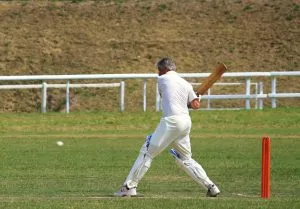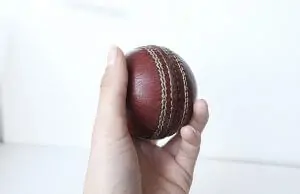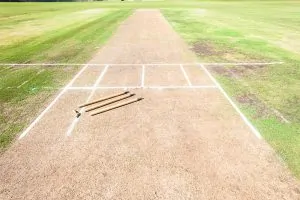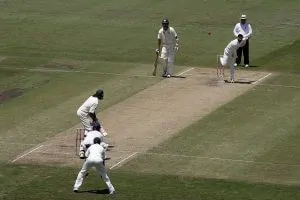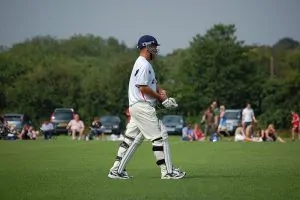How to bat in Cricket?
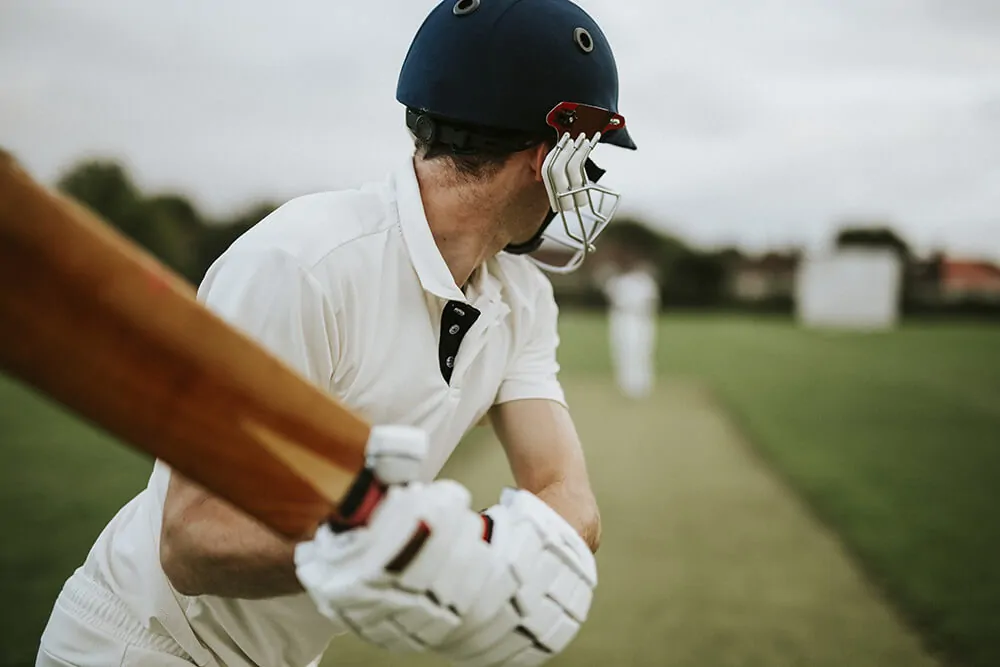
Batting is one of the acts of cricket where a person is required to hit the ball with a bat in order to score runs. Every player is required to bat at some point during a cricket game. Batting is an aspect that involves skills, power, hand-eye coordination, concentration and decision making of a player for him to score runs. Even a tiny lapse of concentration might lead to a lost wicket. However, despite the fact that it may sound rather difficult, batting is probably the most enjoyable part of the game for most players. This article will provide you with the basics of cricket batting, different kinds of shots and tips on how to improve your batting skills.
Contents
How to be a good batsman?
In order to become a good batsman, you must develop the right technique and skills combined with great physical shape and good decision making. There is certain terminology that is worth paying attention to when working on mastering your batting technique.
- Stance: Stance refers to a standing position of a person with a bat. One should take a side-on stance with the feet roughly shoulder-width apart. The bat should be held between the legs in a comfortable position so that it can move freely without making any contact with the body. The head should be turned in the direction of the bowler while shoulders should stay straight. It is important that the knees are slightly bent so that the batsman can lean according to the ball’s trajectory.
- Guard: The batsman has to know the position of the stumps to protect the wicket and score runs. In order to be aware of the stumps’ position while playing the ball, it is usually marked on the crease and the batter stands in accordance with it. Most batsmen tend to take guard in line with the middle stump. You might have witnessed players hitting the stump bail onto the ground to mark their guard.
- Grip: The way the batsman holds the bat plays an important role in transferring his power into the bat swing. For a right-handed batsman, the left hand must be on top of the right one when holding the bat and vice-versa for left-handed batters. One of the basic rules is to use a tight grip with the upper hand and a loose grip with the dominant lower hand. The grip of the dominant hand should be adjusted accordingly when playing the ball. The loose grip might be of help when defending the ball while the hard one allows applying maximum power in attacking shots.
- Footwork: Footwork is the movement of the feet made in order to respond to the balls of different lengths. When paying shots, the batter must ensure his foot moves towards the line of the ball. Balanced footwork is one of the key elements that allow playing shots with ease. It should be decided quickly whether the shot played will be front-foot or back-foot and the bodyweight should be transferred accordingly. Full-length deliveries are played on the front foot whereas short balls are played on the back one. As a rule, a slight trigger movement of feet helps batsmen play faster deliveries. For those who are interested in acquiring brilliant footwork skills, it is highly recommended to take a look at the batting of Virat Kohli or Babar Azam.
- Bat swing: The ability of the batsman to attain full swing of the bat is a vital factor in hitting attacking shots. The batsman holds the bat higher when the bowler is about to release the ball and takes a swing with the bat when reaching it. In fact, the faster the bat swings, the longer the ball travels into the stands. Having touched the ball, the bat continues to follow through, which should better not be interfered with. Brendon McCullum and Eoin Morgan are great examples of players with fast bat swing.
- Eye contact: The batsman must have good eyesight to spot the ball in the bowler’s hand. The batsman should try to predict seam position and bowler`s finger rotation rather early in order to be able to determine the ball`s swing or spin. Good hand-eye coordination will help the batsman to play the ball with ease. Virender Sehwag is one of the classy batsmen with excellent hand-eye coordination.
WhaWhat are the different kinds of shorts played in cricket?
cricket, there is a big variety of shots played by batsmen. Here are the basic ones along with a few of the latest improvisations.
- Drive – A drive is a front-foot shot in which the ball is hit along the ground. The drive can be played from the long on region to the off side square region. There are different types of drives such as straight drive, off-drive, square drive, on-drive, and cover drive. These shots are presumably the most eye-pleasing Sachin Tendulkar`s glorious straight drives.
- Flick – Batsmen tend to use their wrists to flick the ball into the leg side to score runs. With this purpose, the batsman usually rotates his wrist at the moment the bat touches the ball. As a rule, batsmen from subcontinental countries are good at playing this shot.
- Cut – The ball bowled short and wide is cut along the square region on the off side. Such shots are more commonly used in pacy tracks where the ball comes onto the bat nicely.
- Pull or Hook – A pull or hook is a cross-batted shot played when the ball is above the batsman’s waist. The batsman gets on his back foot and swivels to hit the ball towards the leg side. The pull shot is played when the ball is at chest height whereas the hook shot is used when the ball is at the level of the head. Rohit Sharma and Ricky Ponting are the players that prefer the pull or hook shot in cricket.
- Glance – Batsmen tend to use the pace of the bowler to steer it towards the gaps behind the square on both sides of the wicket. The ball is guided on either side of the keeper along the fine leg and third man positions in particular
- Slog – Slog is an old-school attacking shot played over the mid-wicket region. In practice, slog shots are played more often in the final overs.
- Loft – If a shot is played in the air it is called a lofted shot. If timed perfectly, a lofted drive or cut shot may give the batsman six instead of a boundary. As a rule, lofted shots are mostly played to take advantage of the field restrictions.
- Sweep – The sweep shot is usually played when the ball is bowled by a spinner. Batsmen get down on their knees and sweep the ball away. This is one of the most effective shots to stop the spinner from rotating the ball by hitting it in front of the crease.
With the development of cricket, playing unorthodox shots is no longer considered risky, instead, it has evolved into an integral part of the game itself. Throughout the history of the game, various unorthodox shots have been played by different batsmen.
- Reverse sweep or switch hit – Playing a reverse sweep, batsmen tend to change their grip and sweep the ball to the wrong side. A switch hit is a shot in which the batsman changes his stance before hitting the ball. Kevin Pieterson and David Warner are the best examples of the players using the switch hit in international matches.
- Helicopter shot – Helicopter shot is an advanced version of the flick and slog shots. The batsman ends up circularly rotating the bat, just like helicopters’ blades, after making contact with the ball to generate power. It was MS Dhoni who first used the helicopter shot.
- Ramp or Scoop – The ball is played behind the square region even over the wicket keeper`s head for the batsman to score runs. The batsman moves across the crease to scoop the ball on the leg side or get under the ball to play the ramp over the keeper’s head. Dilshan`s Dilscoop and AB De Villiers’ 360-degree shots are great examples of these kinds of shots.
How to improve your batting skHow to improve your batting skills?
med about all necessary technical aspects of the batting and different kinds of shots played in cricket, it is important to pay attention to several tips that are likely to help anyone improve his batting skills.
- Technique – A strong and solid technique is a must for those who wish to become good batsmen. Both footwork and stance should be properly adjusted for the batsman to take the best position when playing the ball. This can be done by simply asking someone to drop the ball in front of you so that you can master the technique. Practicing shots over and over helps to build muscle memory.
- Bat swing – Any good batter has to be able to use the bat swing effectively to hit the ball as far as possible. In order to master this skill, the ball can be hung on a rope and hit hard with the full swing of the bat. The skill can be practiced by the batsman in front of the mirror as well for having a better look at the bat swing.
- Hand-eye coordination – Hands should be put in a perfect position for the batsman to play the ball depending on the ball`s trajectory noticed the earliest possible. The best tip for improving your hand-eye coordination is rather simple: to play cricket as much as possible and bounce balls with the bat.
- Analysing the pitch – As a batsman, we must adapt to the game conditions. The ball might bounce, go low, slow down or pace up depending on the track. It is important for the batsman to be able to analyse the given conditions and adjust his batting accordingly to score more runs.
In conclusion, practice is definitely the best possible way to master any skill and with a non-stop practice our muscle memory tends to effectively store all necessary body movements. In most of the cases, batting is a subconscious set of acts aimed at the body automatically moving according to the ball’s trajectory and speed. Now it is high time to take your bat and master your bating skills with the help of tips and general information provided by this article.

